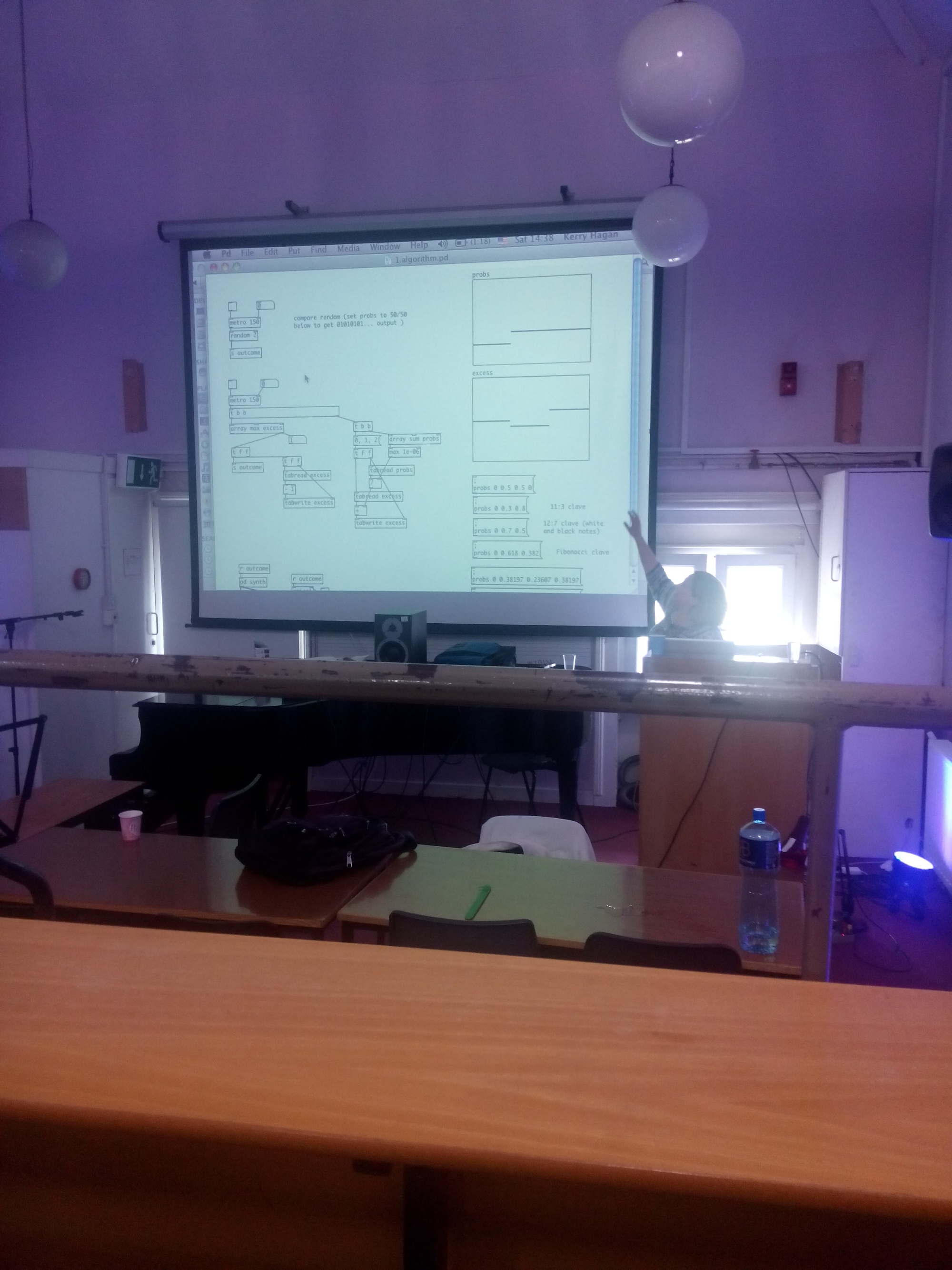She has been collaborating with Miller Puckette since 2014. She is a composer, he is a maths guy. It works well together.
She uses Markov Chains with everything she writes. Xenakis used stochastic Markov chains with an equilibrium states. She uses finite state tables with equilibrium states.
Miller thinks composers want Markov chains to get a particular non equilibrium percentage outputs. He wants maximally uniform random results.
This created repeating patterns, rather than stochastic results. If you use a Fibonacci pattern however, there is no repeat aside from rhythmic motifs. Irrational ratios create non repeating patterns.
Puckette calls this z12 or claves.
How do you use this musically? Try speeding out up to the audio rate!
You get a nice stochastic drone!
The used delays and band pass filters to separate out different lines of material from a single z12.
She does acousmatic music without gesture. This is to surround people with immersive textures.
Now she’s talking about coupled oscillators which is slightly beyond me. It’s a mass spring system? It’s non linear.
She picked a bunch of cool sounds and had the coefficients ramp from one to another.
Rev3~ is a good reverb. And is updated, so it should be rev4~ but anyway.
Oh god the lines on pd patches are yikes.
This a very fruitful collaboration.
Bowers does a random walk involving weighted bit flipping. This is a bounded walk. Lots of small steps, fewer big steps. She’s making a piece with dentist drill sort of noises that will play on bone conduction headphones.
Q. Z12?
A. They are maximally uniform probabilities. It normalises the ratio to 1 then looks at the ratios of x to y and send the one most needed to reach the desired ratio.
So if it’s 3 to 4 it will send the out put most needed to get the right ratio. This repeats with rational numbers.
Q. ?
A. She got a spatulation algorithm which is exactly the one I want for panning. Each speaker has an angle. Each signal has an angle and a width. She used a cosine signal to pan it. In order to get rid of the idea of trajectory she used a sine wave with variable delay.
Q. Can you think of ways to enable other cross discipline collaborations?
A. With students, the challenge is that students don’t respect programmers and programmers think composing is easy. Therefore successful collaborators have a little knowledge of one and are experts on the other. This was tricky to manage at IRCAM, for example. Successful collaborators respect each others skills. This can lead to issues of authorship.
Q. Why use vanilla?
A. More stable! Also she likes building her own stuff. It’s also more useful for mobile platforms.
Q. Couples oscillators
A. They take impulses, like tapping a mass spring object.
